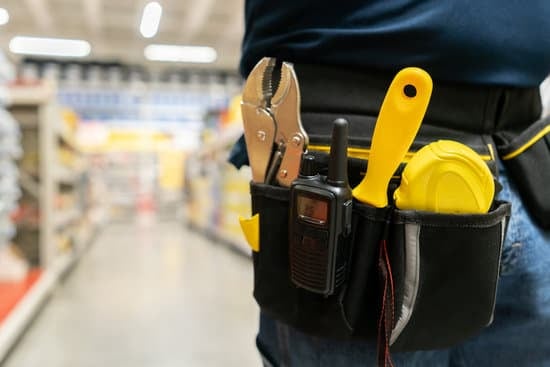Balance is a crucial aspect of our daily lives, allowing us to move with ease, maintain stability, and prevent falls or injuries. Whether it’s reaching for an object on a high shelf or walking up and down stairs, balance plays a significant role in our day-to-day activities. In this article, we will explore the importance of balance and how improving it can greatly benefit our daily life at home.
Having good balance not only helps us perform physical tasks more efficiently but also enhances our overall well-being. A strong sense of balance enables us to carry out household chores with ease, navigate through crowded spaces without stumbling, and engage in recreational activities without fear of falling. Additionally, improved balance can enhance our posture and body alignment, leading to better joint health and decreased risk of chronic pain.
To achieve better balance at home, it is essential to understand the factors that influence it. Muscular strength, proprioception (the awareness of body position), and flexibility all play vital roles in maintaining a stable foundation. By addressing these aspects through targeted exercises and assessments, we can identify areas for improvement and work towards achieving optimal balance.
In the following sections of this article, we will dive deeper into understanding the factors affecting balance and guide you through various exercises designed to gradually improve your stability. Additionally, we will provide practical tips on creating safe environments for effective balance training at home as well as suggest other lifestyle changes that contribute to maintaining good balance.
No matter your current level of fitness or age, there are numerous ways to enhance your balance skills from the comfort of your own home.
Understanding the factors that affect balance
Balance is an essential aspect of daily life and can greatly benefit our overall well-being. However, it is important to understand the factors that affect balance in order to maintain and improve it. Muscular strength, proprioception, and flexibility play key roles in maintaining balance, and understanding their importance can help us enhance our stability.
Muscular strength is crucial for maintaining balance as it helps support our body weight and stabilize our movements. Strong muscles, particularly in the legs, core, ankles, and feet, provide a solid foundation for maintaining upright posture and preventing falls. Incorporating resistance training exercises into your fitness routine can help build muscular strength and improve balance.
Proprioception refers to our body’s ability to sense its position in space. This internal sense allows us to have awareness of where our body parts are without needing visual cues. Developing good proprioception helps us make precise movements and adjustments to maintain equilibrium. Balance exercises that focus on challenging our proprioceptive abilities can help improve overall balance.
Flexibility is another important factor in maintaining balance. It allows us to move freely through a full range of motion without restriction or discomfort. When we have good flexibility in our joints and muscles, we are able to make fluid movements with better control, reducing the risk of falls or instability.
To improve muscular strength for better balance, incorporate strength training exercises like squats, lunges, calf raises, and plank variations into your fitness routine. For proprioception enhancement, try exercises like standing on one leg with closed eyes or using unstable surfaces like a wobble board or stability ball during exercises. Lastly, incorporating regular stretching routines that target major muscle groups can help improve flexibility.
Understanding these factors that affect balance will allow you to focus on specific aspects during your training sessions at home. By paying attention to muscular strength, proprioception, and flexibility through targeted exercises, you can enhance your overall stability and reduce the risk of falls or injuries in your daily life at home.
Assessing your current balance
Assessing your current balance is an important step in improving your overall stability and identifying areas for improvement. By understanding your current level of balance, you can tailor your balance training regimen to suit your specific needs. There are a few simple tests and exercises that can help you assess your current balance at home.
Single-leg standing
A basic test of balance is the single-leg standing exercise. Stand near a wall or sturdy surface for support, then lift one foot off the ground and try to maintain your balance on the other leg for as long as possible. Aim to hold this position for at least 30 seconds on each leg. If you find it challenging to stay stable, it may indicate an imbalance or weakness in certain muscles.
Foam pad test
Another way to assess your balance is by using a foam pad. Place a foam pad on the floor and stand on it with both feet together. Try to maintain your balance without letting your feet move off the pad for as long as possible. This test challenges proprioception, which is the ability to sense where our body is in space and maintain proper alignment.
Tandem walk
The tandem walk exercise is a great way to evaluate your balance while incorporating movement. Find a narrow pathway or create one using tape on the floor, then walk along it by placing one foot directly in front of the other, heel-to-toe. Attempt to walk along this line without losing your balance or stepping off the line.
After you have assessed your current level of balance through these exercises, take note of any areas that feel particularly weak or unstable. These observations will help guide you in creating a targeted balance training program focused on improving those specific areas.
Remember, everyone’s starting point will be different, and progress may take time. Don’t get discouraged if you struggle initially – with consistent practice, you will observe improvements in your balance and overall stability at home.
Creating a safe space for balance training at home
Creating a safe space for balance training at home is crucial to ensure that you can perform your exercises effectively and without any risk of injury. By setting up a dedicated area free from obstacles, incorporating proper lighting, and providing supportive props, you can create an environment that promotes balance training.
Firstly, it is important to clear the designated area of any potential obstacles. This includes removing furniture, cords, or any other items that may pose a tripping or slipping hazard. Keeping the space clean and clutter-free will allow you to move freely and focus solely on your balance exercises. Additionally, make sure the surface you are standing on is stable and even, as an uneven surface can reduce stability and increase the risk of falling.
Proper lighting is essential for maintaining safety during balance training. Ensure that the area is well-lit so that you can see where you are stepping and maintain your balance with greater ease. Natural light from windows or artificial light sources such as lamps can both work effectively to provide adequate illumination.
Incorporating supportive props can also enhance your balance training experience. Props like yoga blocks, foam pads, or resistance bands can assist in improving stability while performing different exercises. For example, using a foam pad under one foot while doing single-leg stands can add an extra challenge to your balance practice.
By taking these steps to create a safe space for balance training at home, you will be able to maximize the effectiveness of your exercises while minimizing the risk of accidents or injuries.
| Creating a Safe Space for Balance Training at Home |
|---|
| – Clear the designated area of any potential obstacles |
| – Incorporate proper lighting to ensure visibility |
| – Provide supportive props such as yoga blocks or foam pads |
Balance exercises for beginners
Balance exercises are an excellent way to improve stability and prevent falls, especially for beginners. These exercises can be easily performed at home without any special equipment, making them accessible to anyone. In this section, we will provide step-by-step instructions and demonstrations for three basic balance exercises that are perfect for beginners: standing on one leg, heel-to-toe walk, and tree pose.
The first exercise is standing on one leg. Start by finding a clear space in your home where you can maintain your balance. Stand tall with your feet hip-width apart and slowly shift your weight onto one foot.
Lift the other foot slightly off the ground while keeping it close to your standing leg. Find a point in front of you to focus on and engage your core muscles to help you maintain stability. Try to hold this position for 30 seconds or longer before switching to the other leg.
The second exercise is heel-to-toe walk, which improves coordination and balance. Begin by standing with your feet together and arms at your sides. Take a step forward with your right foot so that the heel of your right foot touches the toes of your left foot.
Then, take a step forward with your left foot so that the heel of your left foot touches the toes of your right foot. Continue walking in this heel-to-toe pattern for about 20 steps.
The third exercise is the tree pose, which challenges both balance and strength. Start by standing tall with your feet together and arms at your sides. Shift your weight onto one foot as you bend the other knee and place the sole of that foot against the inner thigh or calf of your standing leg (avoid placing it directly on the knee for safety).
Bring both hands together in front of your chest into a prayer position. Focus on a steady gaze point in front of you to help maintain balance. Hold this position for 30 seconds before switching sides.
Practice these beginner-level balance exercises regularly to strengthen your muscles, improve proprioception, and enhance overall balance. As you progress and become more comfortable with these exercises, you can gradually move on to more challenging ones to further enhance your stability and coordination.
| Exercise | Instructions |
|---|---|
| Standing on one leg | – Stand tall with feet hip-width apart
|
| Heel-to-toe walk | – Stand with feet together and arms at sides
|
| Tree pose | – Stand tall with feet together and arms at sides
|
Gradually progressing to advanced balance exercises
Once you have mastered the basic balance exercises mentioned in the previous section, it is time to gradually progress to more advanced exercises that challenge your stability even further. These exercises will not only help improve your balance but also enhance your strength and coordination. Here are some examples of advanced balance exercises that you can incorporate into your home training routine:
- Single-Leg Squats: Stand with your feet shoulder-width apart and lift one leg off the ground, keeping it bent at a 90-degree angle. Slowly bend your supporting leg and lower yourself into a squat position, then return to the starting position. Repeat on each leg for a set number of repetitions.
- Mountain Climbers: Begin in a plank position with your hands directly under your shoulders and engage your core muscles. Lift one foot off the ground and bring your knee towards your chest, then quickly switch legs while maintaining a steady pace. Continue alternating legs as if climbing a mountain for a specific duration or number of repetitions.
- Balance Board Workouts: A balance board is an excellent tool for improving stability and proprioception. Start by standing on the board with both feet parallel to each other, then try to maintain your balance as you shift your weight from side to side or front to back. As you become more comfortable, challenge yourself by performing squats or single-leg movements on the board.
Remember to always prioritize safety when attempting advanced balance exercises at home:
- Start with proper warm-up activities like gentle stretching or light cardio to prepare your muscles.
- Use additional support like handrails, walls, or nearby furniture until you feel confident enough to perform the exercises without assistance.
- Progress gradually by increasing the intensity or duration of each exercise over time rather than attempting too much too soon.
- Listen to your body and take breaks if necessary during challenging movements.
- If you have any pre-existing medical conditions or concerns about these exercises, consult with a healthcare professional before attempting them.
By gradually progressing to advanced balance exercises, you can continue to challenge and improve your stability, strength, and coordination. Don’t be discouraged if these exercises feel difficult at first – with practice, consistency, and patience, you will gradually see improvements in your balance abilities.
Combining balance training with other fitness activities
Benefits of combining balance training with other fitness activities
Combining balance training with other fitness activities can have numerous benefits for overall stability and physical well-being. While focusing on individual balance exercises is important, incorporating them into existing workout routines like yoga, Pilates, or strength training can enhance the effectiveness of the exercises and provide a well-rounded approach to improving balance.
One major benefit of combining balance training with other fitness activities is the ability to target different muscle groups and improve overall coordination. Yoga and Pilates, for example, involve poses and movements that challenge balance while also strengthening the core muscles.
This helps improve stability not only in standing positions but also during dynamic movements. Strength training exercises that require stabilization, such as single-leg squats or lunges, can also be great additions to a balance training routine as they enhance lower body strength while challenging stability.
Tips for incorporating balance exercises into existing workout routines
To incorporate balance exercises into existing workout routines effectively, it is essential to understand the specific goals and needs of each activity. Here are some tips on how to do so:
- Modify existing exercises: Identify exercises in your chosen fitness activity that already challenge your balance and focus on perfecting them. For example, in yoga or Pilates, you can work on improving your tree pose or one-legged balances by holding them for longer periods or adding variations.
- Include dedicated balance drills: Allocate specific time during your workout session solely for practicing balance exercises. This allows you to focus solely on developing your stability skills without other distractions.
- Integrate dynamic movements: Incorporate dynamic movements into your existing workout routine that require balancing or transitioning from one position to another. For instance, in strength training workouts, consider doing squats on a Bosu ball or performing lunges while lifting dumbbells overhead.
- Gradually increase difficulty: As you progress in your current fitness activity, gradually increase the difficulty level of balance exercises. This can be achieved by incorporating unstable surfaces, adding weights, or attempting more challenging variations of the exercise.
- Listen to your body: Remember to always listen to your body and make modifications or adjustments as needed. Don’t push yourself too hard or attempt exercises that exceed your current abilities, as this could lead to injuries.
By combining balance training with other fitness activities, individuals can improve not only their balance but also their overall stability and coordination. It is important to find a balance between challenging oneself and ensuring safety during these workouts. As always, consulting a fitness professional or instructor can provide guidance on incorporating specific balance exercises into existing workout routines.
Other lifestyle changes to improve balance
Proper nutrition, hydration, and regular sleep are essential factors in maintaining good balance. While balance exercises and training play a crucial role in improving stability, incorporating these lifestyle changes into your daily routine can complement your efforts and enhance overall balance.
- Proper Nutrition: A well-balanced diet rich in nutrients is important for maintaining muscle strength and reducing the risk of falls. Including foods that are high in calcium, vitamin D, and magnesium can support bone health and reduce the risk of fractures.
Foods such as dairy products, leafy green vegetables, nuts, and seeds are excellent sources of these nutrients. Additionally, staying hydrated by drinking an adequate amount of water throughout the day is crucial for optimal brain function and supporting the body’s natural balance systems. - Hydration: Dehydration can negatively impact cognitive function, coordination, and overall physical performance – all of which are vital for maintaining balance. It is recommended to drink at least 8 cups (64 ounces) of water per day for adults to stay properly hydrated.
However, individual needs may vary based on factors such as age, weight, activity level, and weather conditions. It’s important to listen to your body’s thirst cues and ensure you’re hydrating adequately throughout the day. - Regular Sleep: Quality sleep is essential for various aspects of health, including balance. Lack of sleep can affect cognitive function and impair coordination skills needed for maintaining stability. Aim to get 7-9 hours of uninterrupted sleep each night as recommended by experts.
By making these lifestyle changes a priority in your daily life at home, you can maximize the benefits gained from balance exercises and training while also promoting overall wellness.
- Include foods high in calcium (dairy products), vitamin D (leafy green vegetables), and magnesium (nuts/seeds).
- Stay hydrated by drinking an adequate amount of water throughout the day.
- Aim to get 7-9 hours of quality sleep each night.
Staying motivated and tracking progress
Maintaining motivation and tracking progress are key factors in successfully improving balance at home. It can be easy to get discouraged or lose interest in a routine, but with the right strategies, individuals can stay on track and see continual improvement.
One effective strategy is setting specific and achievable goals. By setting clear objectives for balance training, individuals have something to work towards and can measure their progress over time. For example, a goal could be to hold a tree pose for 30 seconds without losing balance. Breaking larger goals into smaller milestones can also help provide a sense of accomplishment along the way.
Tracking progress is another important strategy. Keeping a record of workouts, exercises performed, and improvements made allows individuals to visually see how far they have come. This can be done using a journal or using smartphone apps that are specifically designed to track fitness progress. Additionally, taking photos or videos of certain exercises or poses can provide visual evidence of improvement overtime.
Consistency is crucial when it comes to balance training. To maintain consistency, it may be helpful to establish a regular schedule for practice sessions and stick to it. Treating balance training as an integral part of one’s daily routine can make it easier to prioritize and commit to regular practice. Setting reminders on phones or using calendar apps can also be useful tools in staying consistent.
Lastly, finding ways to keep the training engaging and enjoyable is essential for long-term success. This can involve varying exercises or incorporating different types of activities into the routine. For instance, instead of solely focusing on traditional balance exercises like standing on one leg, individuals can try incorporating dance or martial arts movements that challenge their stability while adding an element of fun.
By implementing these strategies for staying motivated and tracking progress in balance training at home, individuals are more likely to see continuous improvement and maintain their commitment towards bettering their balance.
Seeking professional help if needed
While there are many exercises and strategies that can be done at home to improve balance, it is important to recognize that some individuals may require additional assistance. If you have balance-related concerns or medical conditions that impact your ability to maintain stability, it is highly recommended that you consult with a healthcare professional or physical therapist. They can provide valuable guidance and support in developing a personalized plan to address your specific needs.
A healthcare professional or physical therapist will have the expertise to assess your current condition and identify any underlying issues that may be contributing to your balance problems. They can also provide you with targeted exercises and interventions that are tailored to your individual circumstances. By seeking their help, you can receive appropriate and specialized care that addresses the root cause of your balance concerns.
Additionally, if you experience any pain, discomfort, or dizziness during or after performing balance exercises at home, it is crucial to seek guidance from a healthcare professional. These symptoms could indicate an underlying problem that requires further assessment and treatment. Remember, your safety and well-being should always be the top priority when engaging in any exercise program.
In conclusion, while there are numerous resources available for improving balance at home, consulting with a healthcare professional or physical therapist is vital for individuals with balance-related concerns or medical conditions. Their expertise and guidance will ensure that you receive proper care and maximize the effectiveness of your balance training efforts. Don’t hesitate to reach out for help if needed – taking this step can greatly contribute to enhancing your overall stability and quality of life.
Frequently Asked Questions
How can I improve my balance quickly?
Improving balance quickly can be achieved through a combination of exercises and practicing mindfulness. Engaging in exercises that specifically target the muscles responsible for balance, such as yoga, tai chi, or simple standing on one leg, can help strengthen those muscles and improve stability.
Additionally, practicing mindfulness during daily activities, such as consciously focusing on maintaining an erect posture while walking or standing, can greatly contribute to quicker balance improvement. Consistency is key in these practices to see noticeable results.
How can I fix my balance at home?
Fixing balance at home is possible with some simple adjustments and exercises. One effective exercise is the heel-to-toe walk: place one foot directly in front of the other so that the heel of your front foot touches the toes of your back foot, and then take small steps maintaining this position. This exercise challenges your balance by improving coordination between your brain and body movements.
Other options include using a stability ball or cushion while sitting to engage your core muscles, and practicing standing on one leg while performing household chores like brushing teeth or cooking. Consistency and patience are vital in gradually improving balance at home.
How can a 70 year old improve their balance?
For a 70-year-old seeking to improve their balance, it’s important to focus on exercises that prioritize both strength and stability without straining the body excessively. Low-impact exercises like walking or swimming are excellent choices as they offer cardiovascular benefits while enhancing coordination and overall steadiness.
Specific exercises targeting balance can include heel-to-toe walks mentioned earlier, standing up from a seated position without using hands for support, or even incorporating gentle yoga poses designed for seniors into their routine. Regular practice combined with proper nutrition and rest will contribute towards improving balance for a 70-year-old individual.

I’m thrilled to have you here as a part of the Remodeling Top community. This is where my journey as an architect and remodeling enthusiast intersects with your passion for transforming houses into dream homes.





